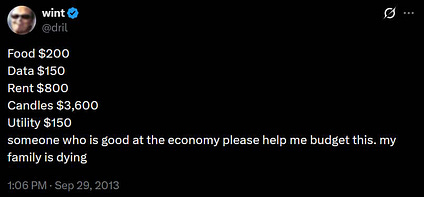‘A boy’s going hungry so his pregnant mum can eat’ – BBC

Report on Localized Food Insecurity and its Impact on Sustainable Development Goals
Executive Summary
This report analyzes testimony from the Sefton Community Pantry, highlighting severe food shortages among local families. The situation provides a direct, ground-level illustration of challenges related to achieving key United Nations Sustainable Development Goals (SDGs). The evidence underscores the urgent need for interventions that address food security, poverty, and health, thereby contributing to the global 2030 Agenda for Sustainable Development.
Case Study Analysis: Sefton Community Pantry
Observations from Lynne Higgins, manager of the Sefton Community Pantry, reveal a critical state of food insecurity within the community. The findings indicate a direct challenge to the principles of sustainable development.
- Prevalence of Severe Food Shortages: The pantry is witnessing a significant deficit in the food supply available to families.
- Impact on Vulnerable Groups: The effects are particularly acute for children and pregnant women. One reported incident involved a school-aged boy who concealed his hunger from his pregnant mother to ensure she and the unborn baby had enough food.
- Psychological Burden on Children: The case study highlights the inappropriate and significant stress placed on children, who are forced to manage adult-level concerns regarding family sustenance and health. This directly contravenes the goal of ensuring well-being for all ages.
Alignment with Sustainable Development Goals (SDGs)
The conditions reported by the Sefton Community Pantry directly relate to several core SDGs. The failure to provide basic nutritional security at a local level impedes progress on the following global goals:
- SDG 2: Zero Hunger: The primary issue is the failure to achieve food security and improved nutrition for all. The existence of and high demand for community pantries signal a critical gap in ensuring access to safe, nutritious, and sufficient food.
- SDG 3: Good Health and Well-being: The reported case of a hungry child and a pregnant mother at risk of malnutrition is a clear violation of this goal. Inadequate nutrition during pregnancy can have devastating, long-term health consequences for both mother and child, while hunger impacts a child’s physical and cognitive development and mental well-being.
- SDG 1: No Poverty: Food insecurity is a primary indicator of poverty in all its forms. The inability of families to afford basic necessities like food demonstrates a clear failure to eradicate poverty at the community level.
- SDG 10: Reduced Inequalities: The need for such charitable services highlights significant inequalities within society, where certain segments of the population lack access to the most fundamental resources for survival and dignity.
Analysis of Sustainable Development Goals in the Article
-
Which SDGs are addressed or connected to the issues highlighted in the article?
The article highlights issues directly connected to the following Sustainable Development Goals (SDGs):
- SDG 1: No Poverty – The need for a community food bank indicates that families are experiencing poverty and lack the financial resources to afford basic necessities like food.
- SDG 2: Zero Hunger – This is the most prominent SDG in the article. The text explicitly discusses families being “short of food,” a boy being “hungry,” and the operation of a “community food bank,” all of which are central to the goal of ending hunger and ensuring food security.
- SDG 3: Good Health and Well-being – The article mentions a “pregnant mum” who might “go without [food]” to feed her child. This situation poses a significant health risk to both the mother and the unborn baby, directly relating to the goal of ensuring healthy lives and well-being.
-
What specific targets under those SDGs can be identified based on the article’s content?
Based on the article’s content, the following specific targets can be identified:
- Target 1.2: “By 2030, reduce at least by half the proportion of men, women and children of all ages living in poverty in all its dimensions according to national definitions.” The existence of families relying on a food pantry is a direct manifestation of poverty that this target aims to reduce.
- Target 2.1: “By 2030, end hunger and ensure access by all people, in particular the poor and people in vulnerable situations, including infants, to safe, nutritious and sufficient food all year round.” The story of the hungry boy and his family being “short of food” directly illustrates a failure to meet this target. The food bank’s existence is a response to this lack of access.
- Target 2.2: “By 2030, end all forms of malnutrition… and address the nutritional needs of… pregnant and lactating women…” The concern for the “pregnant mum” who might go without food and the worry “about the baby” directly relates to addressing the specific nutritional needs of this vulnerable group to prevent malnutrition.
-
Are there any indicators mentioned or implied in the article that can be used to measure progress towards the identified targets?
The article does not mention official SDG indicators, but it implies several informal indicators that could be used to measure the extent of the problem:
- Reliance on food banks: The number of families or individuals using the “Sefton Community Pantry” serves as a direct indicator of food insecurity and poverty in the community. An increase or decrease in users would measure progress towards or away from the targets.
- Prevalence of hunger among children: The anecdote of the boy telling his school he was “hungry” implies that self-reported hunger, particularly within educational institutions, can be an indicator of food insecurity among children.
- Food insecurity in vulnerable groups: The specific mention of the “pregnant mum” highlights the need to measure food insecurity within specific vulnerable populations. The prevalence of pregnant women needing to choose between feeding themselves or their children is a critical indicator of malnutrition risk.
SDGs, Targets, and Indicators Table
| SDGs | Targets | Indicators (Implied from the article) |
|---|---|---|
| SDG 1: No Poverty | 1.2: Reduce at least by half the proportion of people living in poverty. | The number of families requiring support from community food banks. |
| SDG 2: Zero Hunger | 2.1: End hunger and ensure year-round access to sufficient food for all, especially the vulnerable. | Reports of individuals being “short of food” or “hungry,” particularly from children in schools. |
| SDG 2: Zero Hunger | 2.2: End all forms of malnutrition and address the nutritional needs of pregnant women. | The prevalence of pregnant women going without food or relying on food banks. |
| SDG 3: Good Health and Well-being | General goal of ensuring healthy lives (related to maternal and child health). | Incidents of pregnant mothers facing food shortages, posing a risk to their health and that of their baby. |
Source: bbc.com
What is Your Reaction?
 Like
0
Like
0
 Dislike
0
Dislike
0
 Love
0
Love
0
 Funny
0
Funny
0
 Angry
0
Angry
0
 Sad
0
Sad
0
 Wow
0
Wow
0
















































:focal(1500,1000)/https://media.globalcitizen.org/a6/9a/a69a4720-d8a1-4715-b596-18738d03c05c/rotary_polio_hero_image.jpg?#)







/countries/sri-lanka/photo-credit---dmc-sri-lanka.tmb-1200v.jpg?sfvrsn=dc298bcc_1#)


















